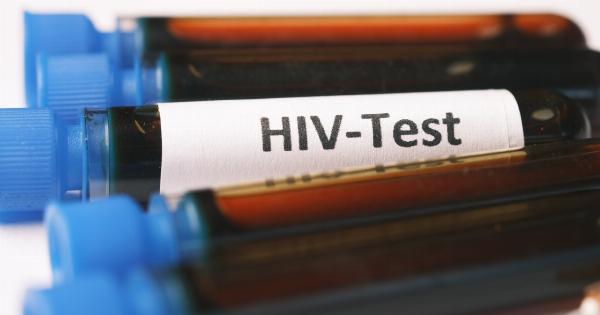HIV, or Human Immunodeficiency Virus, is a global health crisis that continues to affect millions of people worldwide. The virus attacks the immune system, gradually weakening it and making individuals more susceptible to infections and other diseases.
While significant progress has been made in terms of HIV prevention and treatment, there are still numerous challenges that hinder timely treatment and the suppression of the virus.
Rise in New Infections
Despite extensive efforts to curb the spread of HIV, new infections continue to occur at an alarming rate. One of the significant challenges is the lack of awareness and education about the risks, prevention methods, and the importance of early testing.
Many communities, particularly in low-income areas and marginalized populations, have limited access to information and healthcare services, making them more vulnerable to HIV transmission.
Stigma and Discrimination
The stigma associated with HIV remains a significant hurdle in suppressing the virus. People living with HIV often face discrimination and rejection from their own communities, which hinders their willingness to seek testing or treatment.
Fear of judgment and isolation leads to a delay in diagnosis and an increased risk of transmitting the virus to others. Addressing the social stigma and promoting acceptance and support are crucial steps in ensuring timely treatment and care.
Access to Affordable Treatment
Although effective antiretroviral therapy (ART) exists, the accessibility and affordability of these medications remain a challenge in many regions.
The high cost of HIV medications puts them out of reach for many individuals, especially in developing countries. Additionally, the lack of healthcare infrastructure and trained medical professionals further limits the availability of timely treatment options for those in need.
Inadequate Testing and Diagnosis
Early detection is crucial for timely treatment and to prevent further transmission of the virus. However, inadequate testing facilities and limited access to testing services pose significant challenges in diagnosing HIV infection.
Many individuals are unaware of their HIV status due to a lack of available testing centers, long waiting times, and a scarcity of trained healthcare personnel. Improving testing accessibility and implementing efficient diagnostic systems is essential to suppress HIV effectively.
Retention in Care
Once individuals are diagnosed with HIV and start treatment, it is crucial to ensure their continued engagement and retention in care.
This challenge arises due to various factors, including the lack of support systems, socioeconomic barriers, and the demanding nature of long-term treatment. Many individuals face difficulty in adhering to treatment regimens due to the complexity of medication schedules or the presence of side effects.
Developing comprehensive support programs and tailored interventions can improve retention rates and long-term health outcomes.
Co-infections and Comorbidities
HIV does not act alone, and individuals living with the virus are prone to developing other infections and comorbidities. The increased risk of opportunistic infections, such as tuberculosis and pneumonia, further complicates the treatment process.
Co-infections can undermine the effectiveness of HIV treatment, making it challenging to suppress the virus adequately. Integrated healthcare approaches and multidisciplinary care teams are necessary to address both HIV and co-existing medical conditions.
Prevention Challenges
While treatment is vital in suppressing HIV, prevention remains a crucial aspect of combating the epidemic.
Encouraging safe sex practices, promoting access to pre-exposure prophylaxis (PrEP), and raising awareness about needle exchange programs are essential in reducing new infections. However, challenges such as cultural and religious barriers, lack of education, and social norms hinder effective prevention strategies. Addressing these challenges requires comprehensive educational campaigns and targeted interventions.
Maternal and Pediatric Care
HIV transmission from mother to child remains a significant concern. Without appropriate interventions, there is a high risk of vertical transmission during pregnancy, childbirth, or breastfeeding.
Access to quality maternal and pediatric care is crucial to prevent mother-to-child transmission and provide timely treatment for both mothers and infants. However, limited healthcare resources, inadequate prenatal care, and societal barriers pose challenges in ensuring comprehensive care for HIV-positive mothers and their children.
The Role of Social Determinants of Health
Social determinants of health, including poverty, education, housing, and access to healthcare, significantly impact the suppression of HIV.
The lack of basic necessities and inequalities in resource allocation contribute to the vulnerability of certain populations, making it harder to control the spread of the virus. Addressing these social determinants through policy changes, resource redistribution, and targeted interventions can contribute to more effective HIV suppression strategies.
Research and Innovation
Continued research and innovation play a vital role in overcoming the challenges of suppressing HIV.
Developing more affordable and accessible treatment options, improving diagnostics, and finding innovative prevention methods are essential for long-term success.
Investment in scientific research, collaboration between academia and public health institutions, and the involvement of affected communities are critical in driving progress and finding solutions to the challenges faced in HIV treatment and suppression.





























